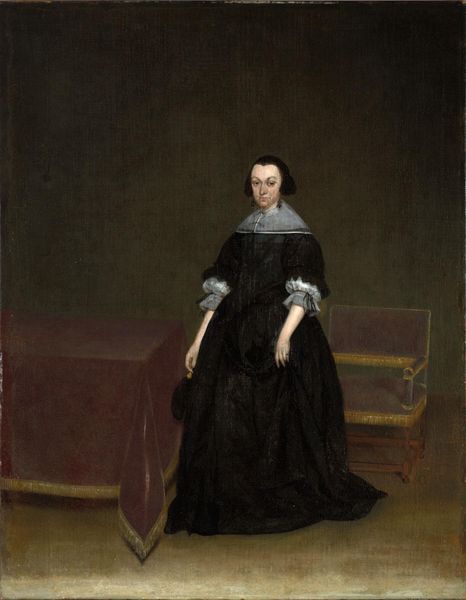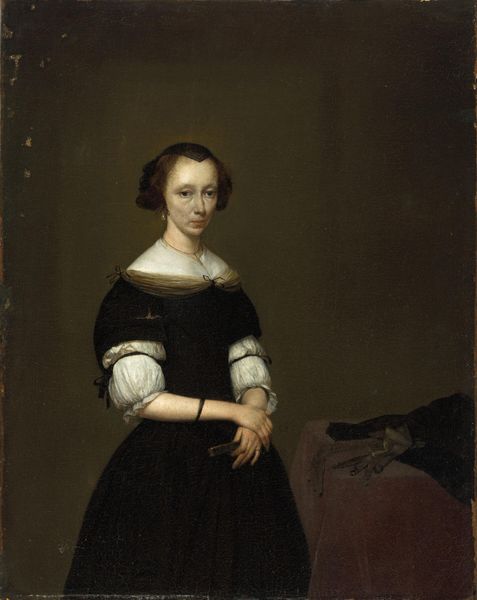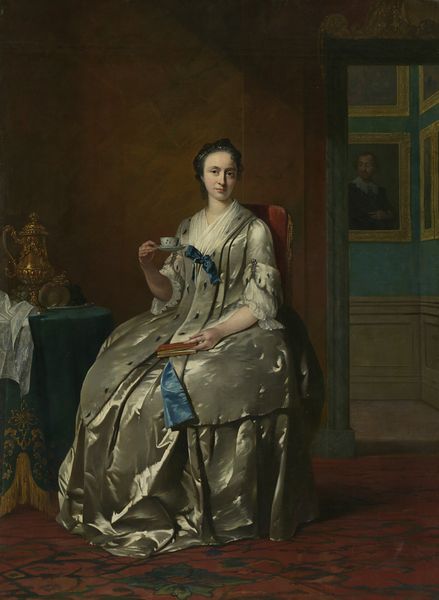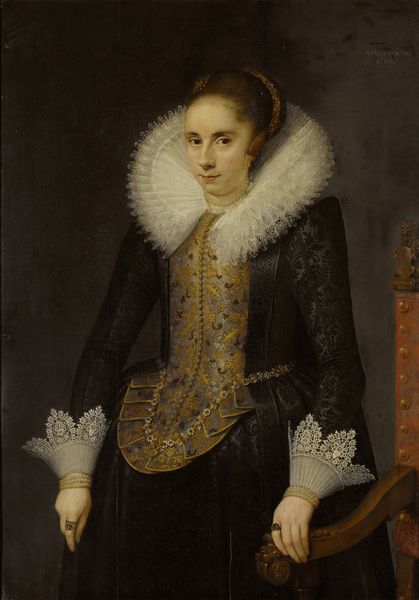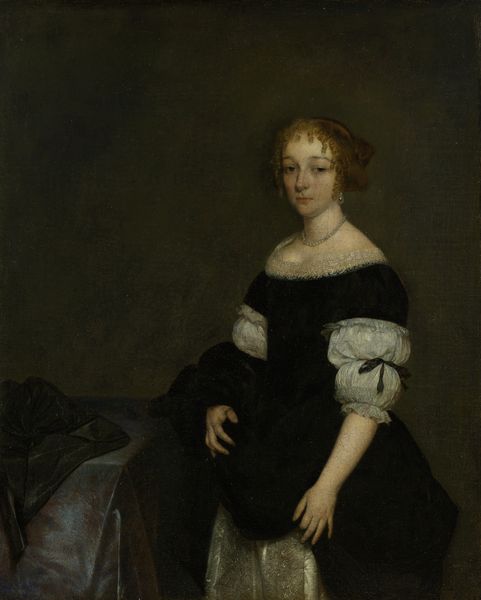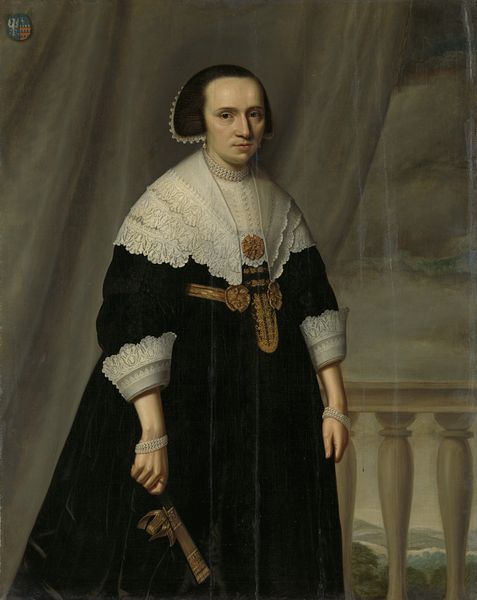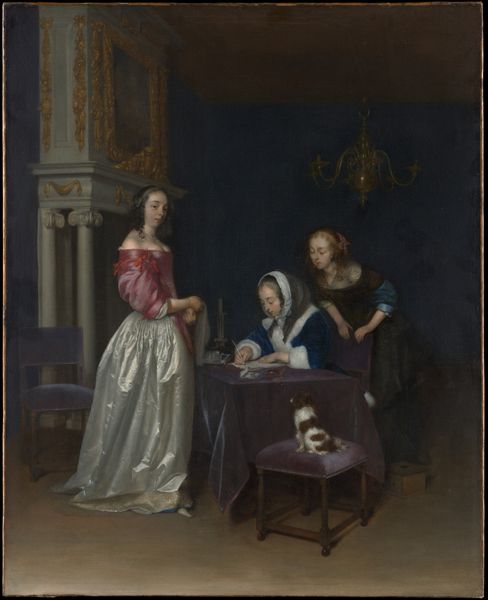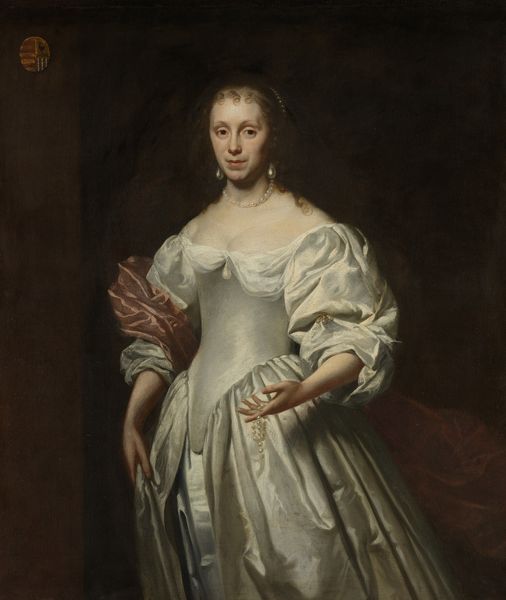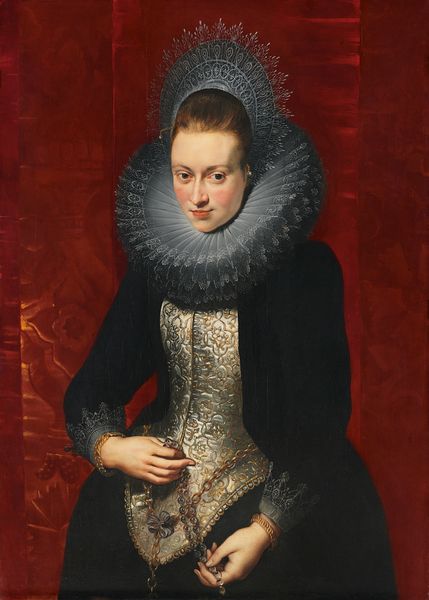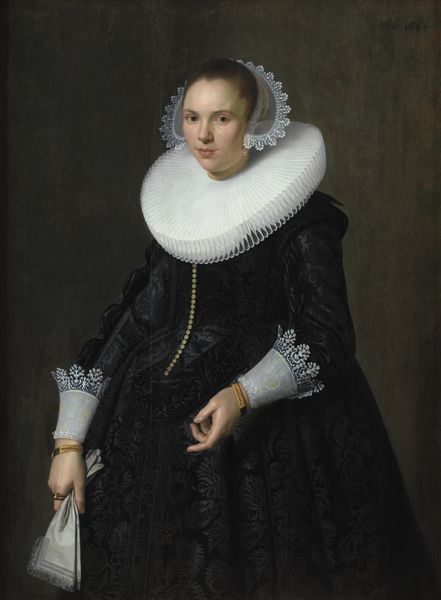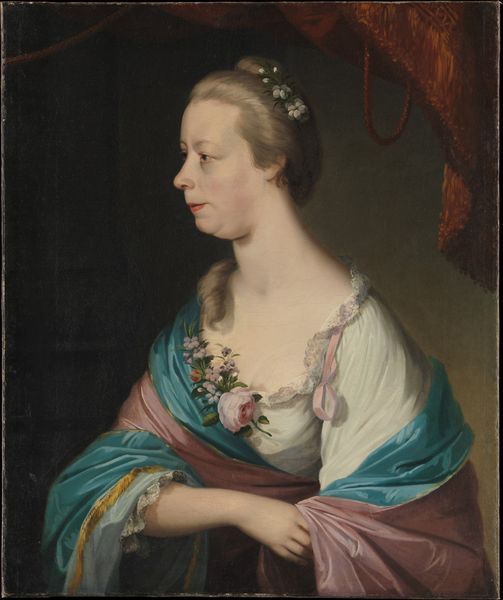
painting, oil-paint
#
portrait
#
baroque
#
painting
#
oil-paint
#
genre-painting
Dimensions: overall: 80.5 × 63.8 cm (31 11/16 × 25 1/8 in.) framed: 101.6 × 101.28 × 8.89 cm (40 × 39 7/8 × 3 1/2 in.)
Copyright: National Gallery of Art: CC0 1.0
Editor: This is Gerard ter Borch the Younger’s “Maria van Suchtelen,” painted around 1666. It’s an oil painting depicting a woman in a dark dress, standing in what appears to be a wealthy home. She looks quite serious, almost stoic. What's your interpretation of this piece? Curator: Well, first, it's important to consider the historical context. This portrait was created during the Dutch Golden Age, a period of immense economic and social change. Portraits weren't just about likeness; they were carefully constructed representations of social standing and personal identity, especially for women. Ter Borch, as a genre painter, was very invested in representing everyday life. Editor: So you are saying this portrait has layers beyond a simple likeness? Curator: Exactly. Look at her dress. The expensive fabrics and meticulous detail indicate wealth. However, her reserved expression and the overall somber mood contrast with the extravagance, offering insight into gender and its influence within the elite. Consider her gaze; it doesn’t directly engage with the viewer, suggesting a sense of detachment or perhaps the limited agency afforded to women of her status. How might this impact contemporary readings? Editor: I hadn't really thought about that. I was focused on the textures of her clothes and the arrangement of items in the room to suggest certain domestic aspects, I didn't factor in her psychological state based on her representation of wealth and position. Curator: It’s important to view it as a complete image—social context and the reality of women are intertwined. We have to decode not just who she was, but *how* she was allowed to be. Understanding these constraints shapes how we view this and other pieces like it. Editor: I definitely have a better understanding of the relationship between her individuality and what’s expected of her, thank you. Curator: Precisely, and I now understand how a contemporary audience can miss the depth and layers that underpin even seemingly simple works like these.
Comments
No comments
Be the first to comment and join the conversation on the ultimate creative platform.
